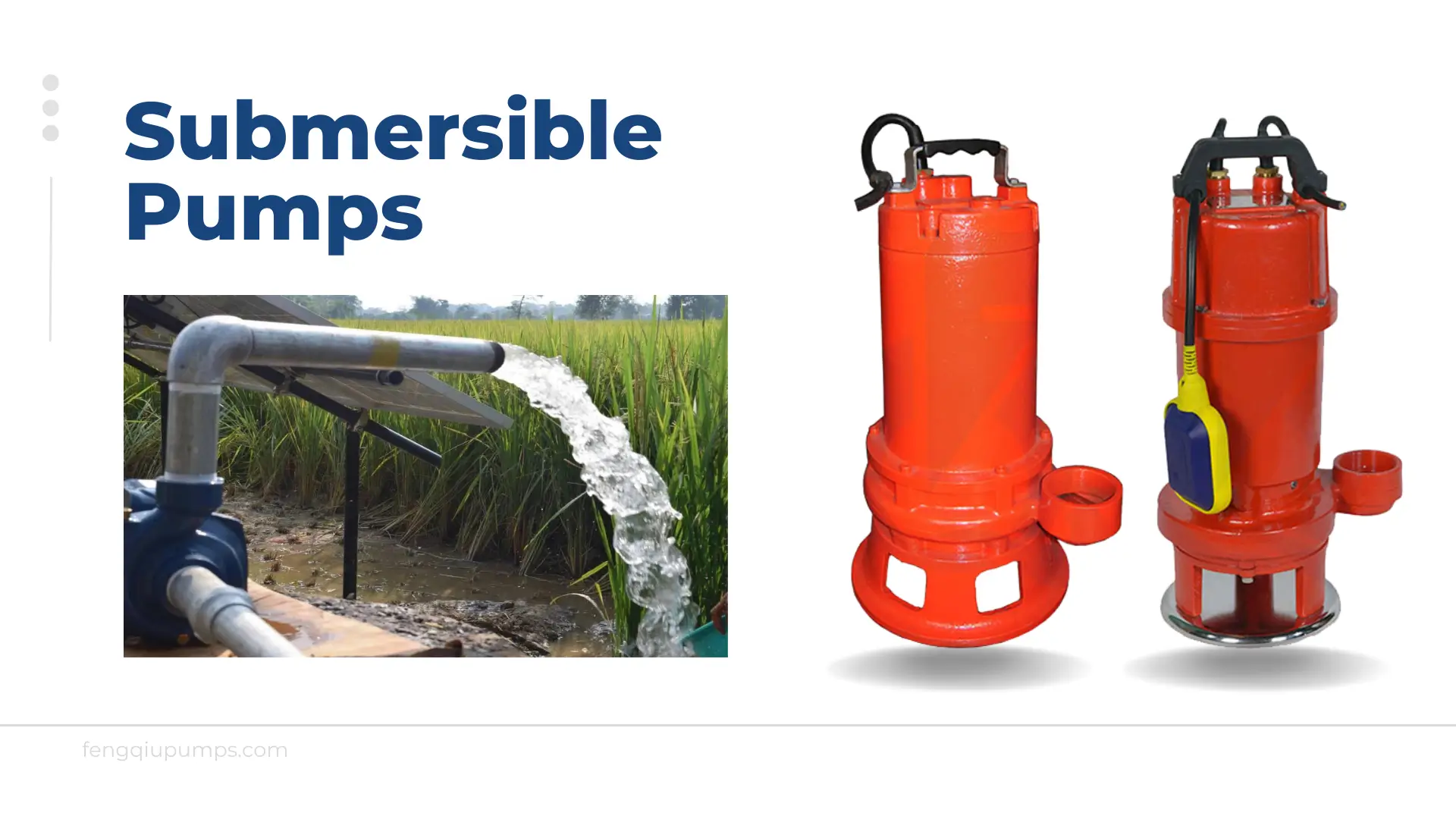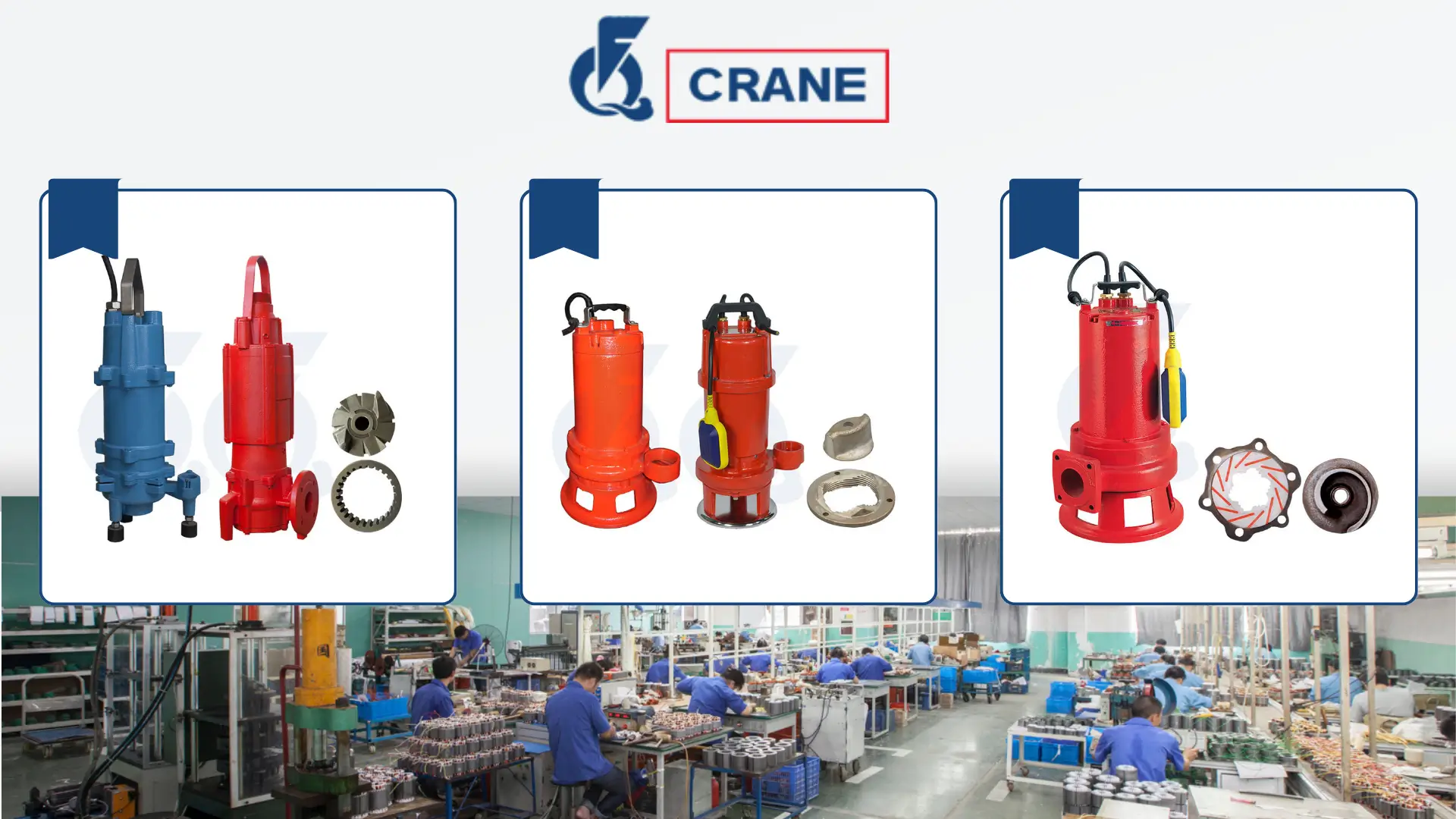Submersible pumps have revolutionized the farming business by making available efficient and reliable solutions toward the management of water.
This article explores various benefits and applications that submersible pumps have in farming, thereby making their case.
How Submersible Pumps Work in Agricultural Settings
They are very suitable for agriculture and hence used for withdrawing groundwater, as well as for irrigation purposes involving the supply of irrigation water and disposal of drainage water.
The pump includes a motor and a pump body sealed against water entry.
When it is turned on, the motor operates an impeller that moves water to the surface so the farmer can easily get access to the resource.
Comparing Different Types of Submersible Pumps for Farming
ESP Electrical Submersible Pumps
Suitable to be positioned in deep wells, they can handle volumes of water and are therefore ideal for big irrigation systems.

Solar Submersible Pump
These are solar-powered pumps and hence an environmental-friendly option, especially for off-grid farms.
This cuts their dependency on fossil fuel sources.
Borehole Pumps
These pumps are designed to suit small diameters, and hence can fit into deep wells, where larger diameter pumps couldn’t.
Expert Recommendations for Best Submersible Pumps in Farming
Brand Reliability
1. Brands
Avail pumps from highly recognized brands that command respect for quality and excellent performance. Many such brands that have experience in dealing with agriculture are more reliable.
2. Warranty
Find products that offer a warranty to customers; this would be an added advantage and would guarantee the product against manufacturing defects.
3. Customer Support
Ensure the brand provides solid customer service and technical support. This might be very important for troubleshooting and maintenance.
Energy Efficiency
1. Energy Ratings
Choose pumps that carry high energy efficiency ratings certified by relevant energy efficiency programs. This kind of pumps consumes less power while delivering the same performance.
2. Variable Speed
A variable speed will give options for operating the pump at various speeds to vary output with demand and even further optimize energy consumption, reducing costs over time.
Durability
1. Anti-Corrosive Materials
Choose those pumps that are made of anti-corrosion materials, mainly when one has to deal with brackish or saline water. Stainless steel and high-grade plastic are normally very suitable.
2. Durable Design
The pumps need to be fabricated in a manner that they can offer immense resistance towards extreme temperature, pressure, and improper water quality.

How Submersible Pumps Contribute to Sustainable Farming
Precise Water Delivery
These pumps are designed for the purpose of accurate water delivery right to the plants’ root zones, minimizing waste. Accurate applications ensure optimum amounts of water reaches the crops, which is so critical for healthy plant growth.
Integration with Drip Irrigation
In drip irrigation, the loss of water by evaporation and runoff when submersible pumps are used becomes considerably lessened. This kind of irrigation slowly delivers water to the soil, ensuring higher levels of water conservation.
Less Environmental Impact
The usage of water in its appropriate form by submersible pumps means avoiding wastage of this resource and contributes to developing an agriculture that is less destructive of nature.
Water Conservation Benefits of Using Submersible Pumps
Targeted Irrigation
As a result of the possibility of delivering water right to the root zone of crops, it is considered that submersible pumps enable targeted irrigation.
The overall water consumption is minimized with this method while the efficiency gets maximized.
Reduced Soil Erosion
By allowing only an optimum amount of water to be applied to the soil, submersible pumps avoid soil erosion and runoff, thus preserving soil quality and fertility.
Integration of Smart Technology
Integration with submersible pumps and smart technologies facilitates the realization of water usage in real time and makes the necessary adjustments.
Sensors detect soil moisture and weather conditions for better irrigation practices.
Ability to Adapt
Automated systems can deal with changes in weather immediately, ensuring that water is applied only when it is needed.
Importance of Submersible Pumps in Agriculture
Supply to Livestock
The constant availability of water provided by these submersible pumps ensures that the animals have a good source of water, which is required in the normal functions of the animal health, growth and general productivity
Excess Water Management
Such pumps play an important role in the field by removing excess water to prevent damage to crops and soil erosion.
Efficient drainage systems help protect crops from waterlogging and maintain soil health.
Read More:
- Types and Applications of Submersible Pumps in Agriculture
- Advantages of Using Submersible Pumps in Agriculture
- Top Brands of Submersible Pumps for Agriculture
Designing an Efficient Irrigation System with Submersible Pumps
Pump Placement
1. Topography
Studying the slope and elevation of the land are of great importance in determining the most strategic positioning of pumps to ensure that water flows well.
2. Distance from Water Source
The nearer the pumps are to the water source, the less energy is spent to deliver water over a long distance.
3. Field layout
Knowing the pattern of the spread of the fields over the area, the type of crops, and the amount of water each requires enables the best placement of pumps so that irrigation needs are met at any single point.

System Integration
1. Timers
Timers enable farmers to have very exact control over the irrigation schedules of their crops, ensuring that water is applied at precisely the right times. This is a great way to minimize waste in this process.
2. Moisture Sensors
These sensors monitor the actual moisture levels within the soil in real time and adjust irrigation accordingly, based not on a scheduled program.
3. Smart Controllers
Smart controllers can work out an entirely automated regime of treatments depending on the weather and soil conditions. It integrates timers and sensors, and water is used as economically as possible to help ensure the health of crops.
Distribution Network
1. Pipe Layout
A network of pipes with minimum bends and elevation changes offers fewer pressure losses in its way and improves efficiency.
2. Selection of the Emitter
As per the actual requirement of the crop, drippers, sprayers, etc., are selected to ensure appropriate water distribution.
3. Regular Maintenance
Pipes and emitters are to be placed on regular maintenance schedule to avoid clogging and leakage for proper distribution of water, which otherwise may cause non-uniform distribution of water, adding to the cost in the process.
Reducing Energy Consumption in Agricultural Pumping
By Employing Variable Speed Drives
1. Demand-Based Adjustments
VSDs operate pumps at variable speeds in line with the instantaneous demand for water.
For large irrigation systems where demands fluctuate, this can lead to huge savings on energy.
2. Reduced Wear and Tear
Due to the reduction in stress linked to variable speed, components have an increased service life, which consequently results in less maintenance costs.
3. Efficiency
The VSDs provide the added advantage of not just optimizing pump operation to match real demands but do so efficiently, ensuring proper usage of energy resources for crop irrigation purposes.

Implementing Solar Solutions
1. Installation of Photovoltaic Panels
Solar panels can be installed near the sites of pumps for the generation of renewable energy, hence reducing reliance on the grid in supplying electricity.
2. Energy Storage Systems
With battery storage integration, it is possible to capture energy when sunny days are prevailing, hence irrigation during no-sunshine periods.
3. Incentives and Grants
Most regions have financial incentives available for farmers in order to invest in solar solutions, making the implementation of these systems much more viable.
Conclusion
Nowadays, submersible pumps are a valuable commodity in farming.
Due to their enormous contribution to managing water effectively, working toward sustainability, and efficiency in farming, they become indispensable for farmers.
If farmers can understand how such pumps work and all the benefits which can be derived from them, then they would be better positioned to make informed decisions leading toward increased productivity with resources conserved.
Besides being a purely financial investment, buying a submersible pump means investing in one’s commitment to sustainable and efficient farming.

